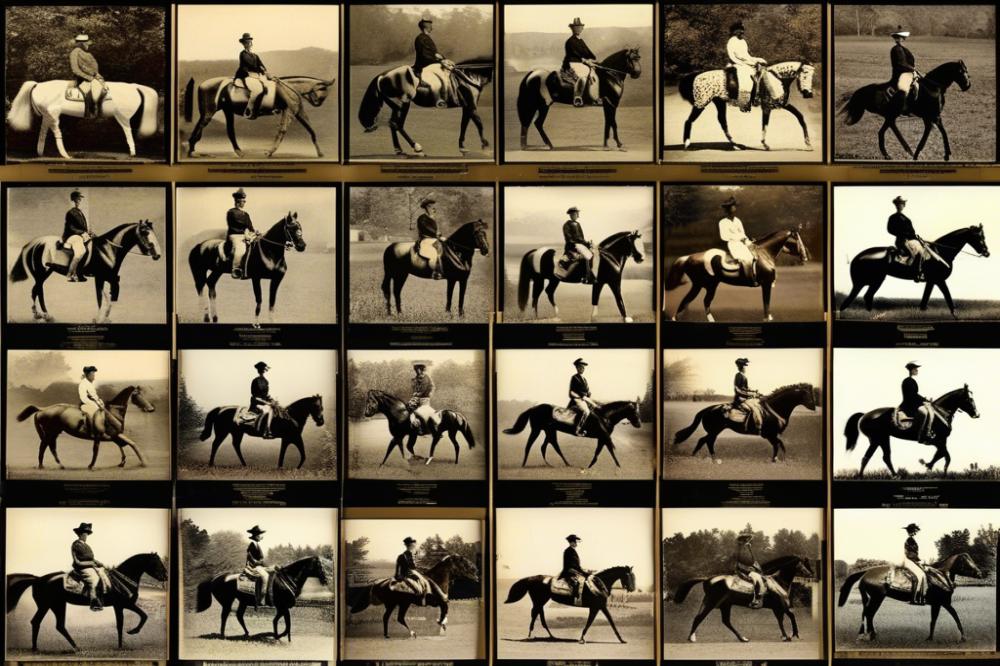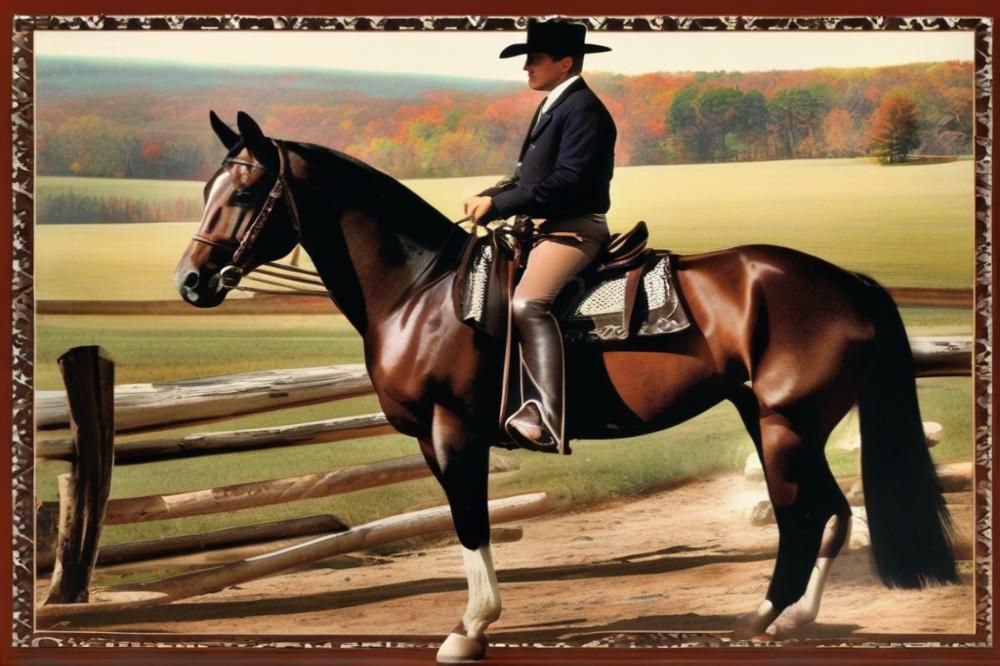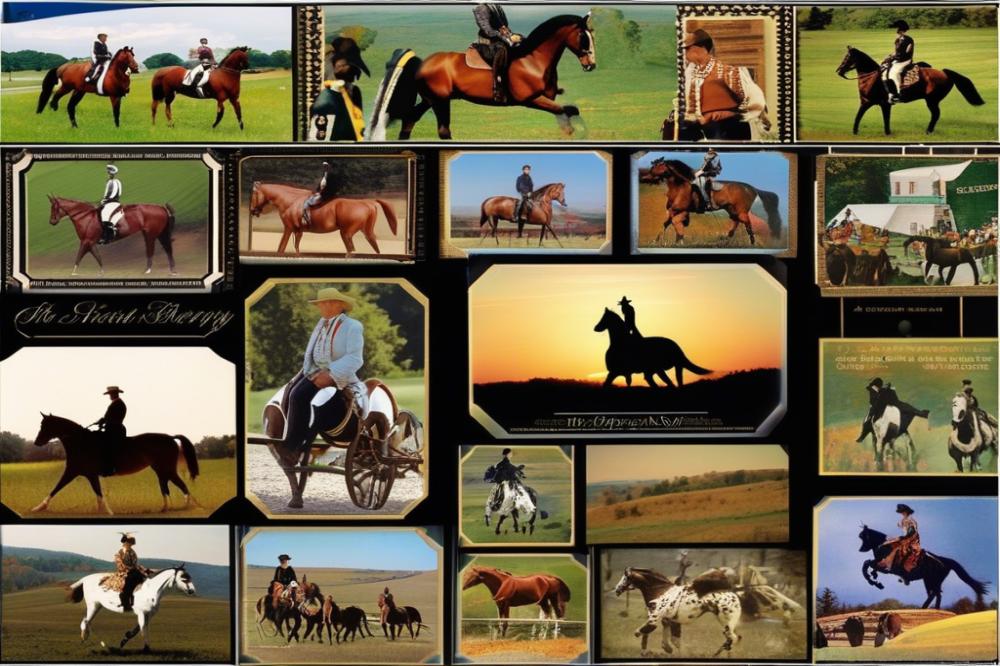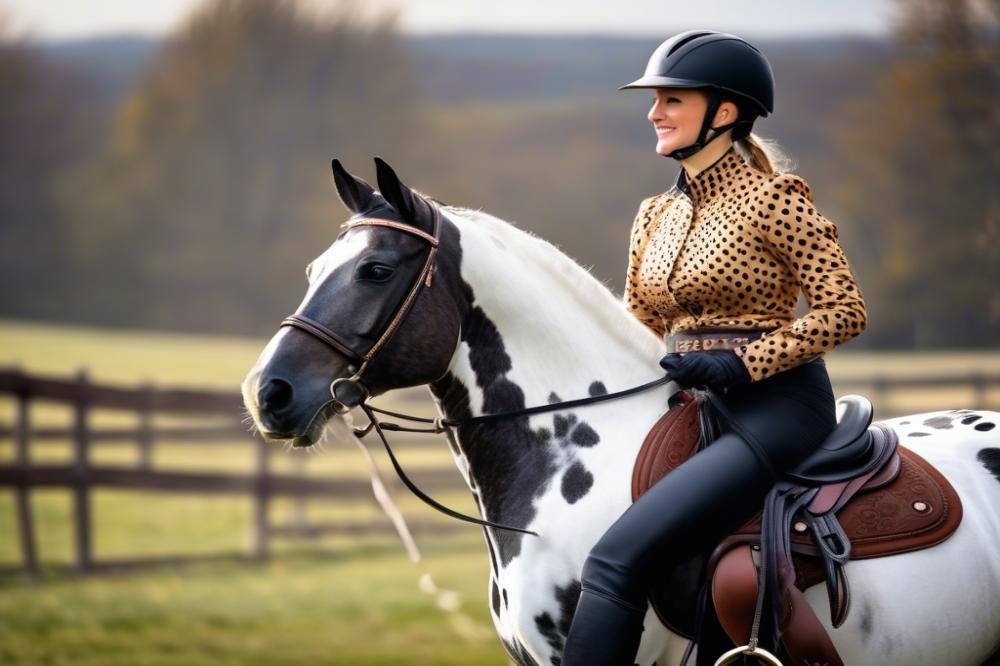Introduction
Riding an Appaloosa is a rewarding experience. These horses are known for their endurance, intelligence, and colorful coats. Many equestrians admire their distinct looks and vibrant personalities. Each Appaloosa can be unique in both appearance and temperament. This diversity adds to the appeal of riding them.
smooth gaits and balance are vital for a successful ride. Riders often find that these elements contribute to comfort and control. When a horse moves fluidly, it makes the ride enjoyable for both the animal and the rider. Good gait balance enhances communication between them, ensuring a harmonious experience. Riders can maintain confidence when they feel secure and stable in the saddle.
This article aims to guide readers on achieving fluid rides on Appaloosas. Information here will cover tips and techniques to improve balance and control. Understanding these principles can transform the riding experience. We’ll also discuss how to connect with the horse on a deeper level. With the right approach, anyone can enjoy smooth and comfortable Appaloosa riding.
Understanding the Appaloosa Breed

History and Characteristics of Appaloosas
Appaloosas are among the most storied horse breeds in America. Their lineage dates back to the Nez Perce tribe, who selectively bred these horses for their speed and strength. The unique spotted coat pattern can vary drastically, making each Appaloosa distinct. Many people admire them for their colorful and eye-catching looks. Furthermore, these horses are known for their loyal temperament and versatility. They excel in various disciplines, from trail riding to competitive events.
Natural Gaits and Movement Tendencies
Understanding Appaloosa gaits is essential for riders. They possess natural rhythms, often showing smoothness whether at a walk, trot, or lope. This breed tends to be agile, which contributes to their balanced movements. Riders may notice that Appaloosas can switch between gaits with relative ease. That agility allows them to adapt to various riding styles and terrains. Additionally, their strong hindquarters provide thrust, giving them a solid foundation for performance.
Significance of Breed-Specific Training
Training an Appaloosa requires attention to their unique traits. Appreciating their natural instincts helps riders connect better with these horses. Specific methods can enhance their balance and gaits, making riding more enjoyable for both parties. Consistent practice fosters trust and confidence. Riders must also be aware of their horse’s strengths and weaknesses. This understanding greatly impacts overall performance. Tailoring training to suit an Appaloosa’s characteristics enhances its abilities while nurturing a strong bond between horse and rider.
Horse riding techniques for Appaloosas

Key riding techniques for smooth gaits
Riding an Appaloosa requires a few important techniques. One must focus on rhythm and timing. This breed is known for its smooth gaits, but the rider plays a critical role in enhancing this quality. Keeping a consistent tempo is essential. Slow, controlled movements help maintain balance and harmony between horse and rider. Using your legs effectively can guide the horse without overwhelming it. Apply just enough pressure to communicate your intentions clearly.
Importance of Body Alignment and Riding Posture
Body alignment greatly influences how an Appaloosa moves beneath you. Sitting up straight can help you maintain stability. Relax your shoulders and keep your hands steady. A balanced posture promotes smoother transitions between gaits. When you sit correctly, you allow your horse to move freely. Feet should be in the right position, not too far forward or back. Your heels need to drop slightly to engage the horse’s sides. This alignment not only helps your riding but also enhances your horse’s comfort.
Utilizing the Principles of Equestrian Balance
Equestrian balance is crucial for both a rider and their mount. Strive for an even weight distribution in the saddle. This practice reduces strain on the horse and boosts its gait quality. Engage your core muscles to stay centered as the horse moves. Think of balance as a dance; both you and the horse must work together in harmony. The more balanced you are, the more your horse can relax and respond. Practicing circles or transitions can improve this skill further. Find your center, and let the Appaloosa take you on a smoother ride.
Appaloosa Training for Gait Improvement

Training an Appaloosa to enhance gaits involves various specific methods. Riders must focus on exercises that develop flexibility and strength. Both play crucial roles in the horse’s ability to move smoothly.
Groundwork is essential. Start by introducing your horse to different obstacles. This can help improve coordination. Use poles for your horse to walk over and trot over as well. These exercises encourage the horse to lift its feet, promoting agility.
Lunging can be effective in building balance. This practice allows the horse to work on moving in circles. Gradual increases in speed help strengthen their muscles, making future rides more balanced.
Serpentine patterns are beneficial as well. This exercise involves weaving between markers placed on the ground. It challenges your horse to change direction frequently. Such movements increase body awareness, promoting graceful transitions in gait.
Implementing cavaletti work is also worthwhile. Set up small jumps to canter over. This activity enhances muscle tone and improves form. Moreover, it adds an element of fun to training sessions.
Consistency is key in training Appaloosas. You should provide regular feedback. A consistent schedule helps the horse understand what is expected. Each training session builds on the last. This repetition fosters confidence and stability.
Riders must also pay attention to their own position. Maintaining a balanced seat allows better communication with the horse. Your posture can significantly influence how the horse carries itself.
Encouragement goes a long way. Horses thrive on positive reinforcement. Rewarding good behavior helps in reinforcing the desired gaits. This builds trust and keeps the training experience enjoyable.
Adopting these methods leads to noticeable improvements. Incorporating various exercises should become part of your routine. A dedicated approach provides rewarding outcomes for both horse and rider alike.
Tips for Improving Riding Skills
Riding a horse, especially an Appaloosa, can be a rewarding experience. Beginners should focus on the basics. Start with proper posture. Sitting up straight helps create a balanced position. Learning to hold the reins correctly is essential for control.
Experienced riders can deepen their skills through practice. Regular drills enhance muscle memory. Practicing transitions between gaits promotes fluidity in movement. This is critical for achieving smooth rides.
Building Confidence Through Groundwork and Riding Practice
Establishing confidence begins on the ground. Spend time grooming and leading your horse. This builds a bond and promotes trust. When you feel connected, riding becomes less intimidating. Set small goals during riding sessions. Celebrate each success, no matter how minor it seems.
Group lessons can be beneficial. Riding alongside others creates a supportive environment. Watching peers can also offer new insights into technique. Always remember, it is normal to feel nervous. Over time, those jitters will lessen with consistent practice.
Advanced Equestrian Skills for Experienced Riders
Advanced riders must refine their techniques. Focus on precision. Work on maintaining a consistent pace during every gait. Mastering bending and circles can improve overall control.
Incorporating exercises like trotting poles can enhance rhythm. A strong sense of timing will develop through repetition. Remember to vary your training sessions to keep your horse engaged. Advanced maneuvers require patience and dedication. Test your boundaries gradually. Challenge yourself, but know your limits.
Finally, consider developing a specific style. Whether it’s dressage or jumping, having a focus can intensify your training. Each discipline has unique skills to master. Continuous learning is vital in the world of riding.
Appaloosa Care for Optimal Performance
Proper care plays an essential role in maintaining the smooth gaits of these horses. Attention to their health can greatly enhance their performance. A horse’s gait is affected by its overall well-being. Therefore, when you focus on care, you support their movement and balance.
Nutrition and Health Considerations for Appaloosas
Nutrition is a key factor in keeping Appaloosas in top shape. These horses benefit from a balanced diet rich in fiber, vitamins, and minerals. Fresh hay and quality grains can help maintain their energy levels. Always consult with a veterinarian to find the best feeding plan suited for your horse.
Hydration is equally important. Proper water intake aids digestion and overall health. Observe your horse to make sure it drinks enough, especially after exercise. Healthy body weight is critical too. Regular monitoring can help prevent issues later on.
Regular Veterinary Care and Hoof Management
Regular check-ups with a veterinarian are crucial for good health. A vet can spot potential problems before they become serious. Routine vaccinations and dental care keep your horse comfortable and performing well. Focusing on preventative care saves trouble down the road.
Hoof care is another key aspect. Clean, properly trimmed hooves promote balance and prevent injuries. A skilled farrier can help keep your Appaloosa’s feet in excellent condition, ensuring a solid foundation for riding. Neglecting hoof care can lead to discomfort and uneven gaits.
In summary, keeping your Appaloosa healthy takes more than just riding. Proper nutrition, regular vet visits, and hoof management are vital for maintaining smooth movements. Take care to pay attention to these aspects to truly support your horse’s performance.
Final Thoughts on Riding an Appaloosa
Riding an Appaloosa is about embracing their distinct nature while achieving smooth gaits and balance. Each key point discussed has centered around understanding this breed’s characteristics, including their strength and agility. Riders should remember the importance of proper posture and seat balance. A strong connection with the horse can transform the rider’s experience.
Practice must be prioritized for those who want to improve their skills. Consistent riding helps build confidence, both in the rider and the horse. Developing a bond with your Appaloosa through time spent together is invaluable. Each ride can bring new lessons, so staying open to learning is essential.
Achieving mastery in horse riding is a journey rather than a destination. Over time, riders will find their unique rhythm and discover the nuances of their horse’s movements. Patience is vital, as progress can be gradual. Focus on small victories and celebrate them. This journey promises fulfilling moments for both horse and rider.
Ultimately, the goal is not perfection but progress. Finding joy in each ride is equally important. By committing to practice and engaging with the horse on a deeper level, smooth gaits and balanced riding will naturally follow. Embrace the ride ahead!



